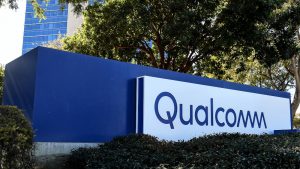IBM Sequoia Faces Competition in Supercomputing Race
![]() The Japanese are no longer owners of the most powerful supercomputer in the world. One again, it’s US that holds the title. We’ve known for a while that Sequoia is a supercomputer developed by IBM, with the potential to be the fastest system of its kind in the world.
The Japanese are no longer owners of the most powerful supercomputer in the world. One again, it’s US that holds the title. We’ve known for a while that Sequoia is a supercomputer developed by IBM, with the potential to be the fastest system of its kind in the world.
The latest Top500 list of supercomputers, released last month, marks the entry of the Sequoia to become the new, number one supercomputer in the world, displacing the Japanese K system.
The largest number of systems in the top 500 list is based on microprocessors running on AMD, IBM and Intel. More specifically, 372 on the list belong to the supercomputing processors from Intel, 63 on AMD processors and 58 on IBM processors.
IBM Sequoia consists of 96 racks of IBM Blue Gene/Q, and includes 98,304 computing nodes, 1.6 million cores, 1.6 petabytes of memory and is capable of processing 16.32 petaflops of operations per second. The previous record belonged to the K Computer from Fujitsu, which had a 10.51 petaflops performance. Incidentally, IBM Sequoia consumes only 7.9 megawatts of power, which is one third less than the K Computer.
It was in November 2010 that the US lost their place at the top in favor of Chinese supercomputer Tianhe-1A. Six months later, it heeded to the K computer, manufactured by Japan-based Fujitsu.
IBM has big plans for supercomputing
IBM has developed the supercomputer for the National Nuclear Security Administration (NNSA) and currently is installed at Lawrence Livermore National Laboratory, funded primarily by the Department of Energy of the United States.
The NNSA explained that the supercomputer system used to ensure the safety of U.S. nuclear weapons in the Department of Energy’s Lawrence Livermore National Laboratory, and help better understand the performance of weapons and property of materials under extreme temperature and pressure.
“We’re at the point where the processors themselves aren’t really getting any faster,” said Michael Papka, deputy associate director for computing, environment and life sciences at the DOE’s Argonne National Laboratory, which runs a similar IBM system that placed third on the list. “Moore’s Law is generally slowing down and we’re [getting faster speeds] by parallelism.”
“The classic trick of waiting for Moore’s Law to come along and help you out really doesn’t exist anymore,” added David Turek, vice president of exascale computing at IBM.
In third place in the list is occupied by a completely new look, which is also found in the US (DOE / SC / Argonne National Laboratory). Its yield is 8.16 petaflops (maximum), driven by 786,432 cores.
Others are not far behind
After losing the top slot, Fujitsu Ltd. President Masami Yamamoto said the company is developing a supercomputer to surpass the K Computer. Yamamoto said he hopes to regain the top slot in the world rankings in a few years.
While the U.S. is home to 253 of the top 500, Asian players took the second spot with 121 supercomputers followed by Europe, which managed to inch up from 103 systems to 107 compared to last year.
The Science and Technology Facilities Council’s IBM Blue Joule system came as the highest-ranking UK system, reaching 13th place with 1.2 petaflops. Others like University of Edinburgh, the Metrological Office, and the European Centre for Medium-Range Weather Forecasts also made the top 50.
A message from John Furrier, co-founder of SiliconANGLE:
Your vote of support is important to us and it helps us keep the content FREE.
One click below supports our mission to provide free, deep, and relevant content.
Join our community on YouTube
Join the community that includes more than 15,000 #CubeAlumni experts, including Amazon.com CEO Andy Jassy, Dell Technologies founder and CEO Michael Dell, Intel CEO Pat Gelsinger, and many more luminaries and experts.
THANK YOU













